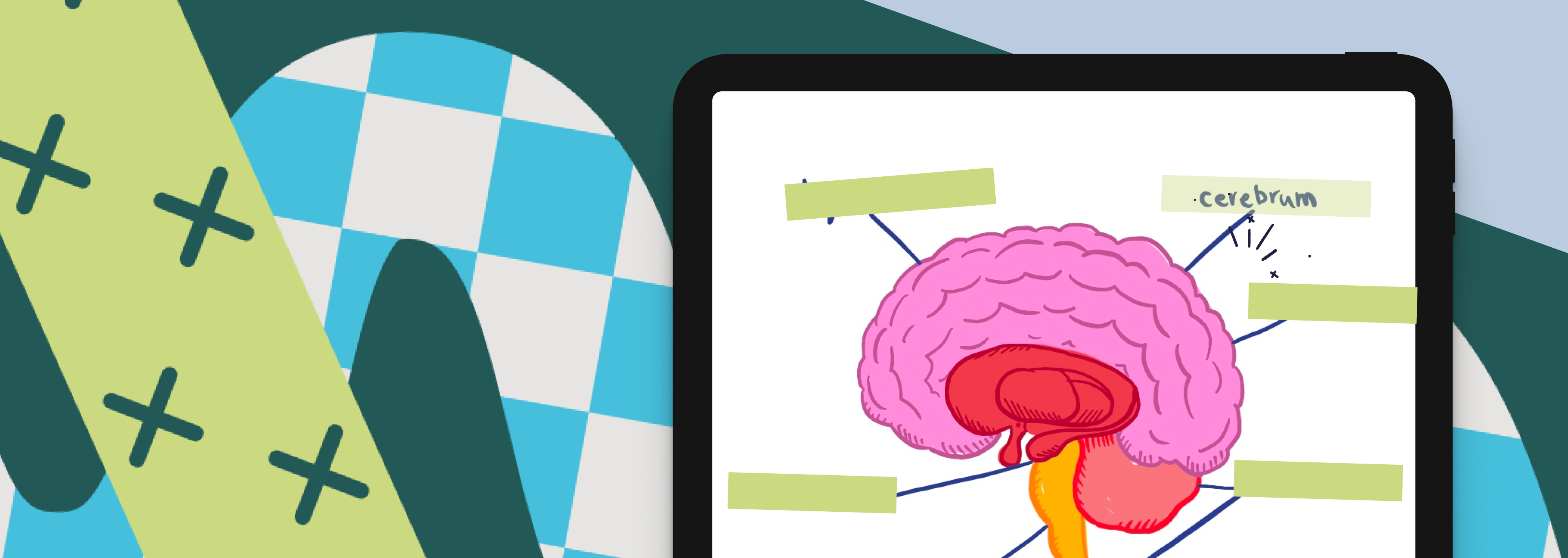Chelsea Mangold-Takao is a Product Designer at Goodnotes who worked to bring the Tape tool to Goodnotes. Here’s the story behind how it was made.
One of the most rewarding parts of my job as a Product Designer is figuring out how to transform the simple, everyday behaviors of our users into powerful new features.
Today, I want to take you behind the scenes and share the story of a feature I’m incredibly proud of: the Tape tool. It’s a simple tool on the surface, but its journey from a user "hack" to a core study feature gets to the very heart of why we build what we build: to make learning more interactive, effective, and even joyful.
From Passive Notes to Active Learning
Every student knows the feeling of staring at a page of their own notes, trying to will the information into their brain. Our research confirmed a common habit: re-reading and highlighting are the most popular study methods for many users. While highlighting feels productive, learning science tells us that true retention comes from active recall, the effort of actively retrieving information from your memory. This is what strengthens knowledge for the long term.

We saw our users instinctively trying to do this already. They were inventing their own active recall hacks right inside Goodnotes:
- We saw anatomy students meticulously covering labels on diagrams with pen marks, then using the eraser to check their answers.
- In Japan, some users cleverly used accessibility features to make red ink invisible, effectively hiding and revealing their notes.
- Others would duplicate an entire page of notes, erase the answers on the copy, and try to fill them in again from memory.
These weren't just clever workarounds, they were a clear signal. Our users wanted to turn their static documents; lecture notes, imported textbooks, and PDFs, into interactive study materials. The Tape tool was our answer to bridge that gap and turn passive reading into an active recall exercise.
Designing the "Tape"
The name "Tape" felt right immediately. We loved the real-world metaphor. Washi tape is often used to temporarily stick something up or to add a decorative flair. That transient nature felt perfect - the tape is a temporary layer on your notes, there to help you study until you've mastered the content and no longer need it.
Once the idea sparked, I was so excited that I spent a weekend designing the initial user flow to pitch to the team. While the first version was pretty close to what you see today, getting the details right involved solving two big design challenges.
- How should it feel to draw tape? We wanted it to be flexible. You should be able to draw organic, freeform shapes to cover specific words or diagrams. But what about covering a whole paragraph? We designed the interaction so that if you draw a line and hold, it snaps into a perfectly straight segment. You can then pivot that segment to any angle, making it intuitive to cover vertical text or entire blocks of content with ease.
- Where should this tool live? Was Tape a type of Pen? An evolution of the Highlighter? Or something new? We ultimately decided to give Tape its own place in the toolbar. We saw its potential for two key uses: first and foremost as a study tool, but also as a way for users to simply decorate their notes. We've all seen the beautiful and aesthetic notes on studygram, and giving Tape its own identity meant users could embrace it for both focused learning and creative expression.
Getting these interactions just right was a true team effort. I worked side-by-side with Nathan and Francis, the lead engineers on the project. Through countless huddles and quick meetings, they found brilliant ways to bring the intended design to life, navigating technical constraints to create the fluid experience we have today.
Making Learning Joyful and Personal
We know that note-taking is a deeply personal process. The most effective notes are often the ones you feel a connection to. That’s why customization was a priority.
When we later added patterns to Tape, I worked with our UI designer, Estefania. We dove into the world of studygram for inspiration and designed patterns that we ourselves would love to use. The goal was to give users a creative starting point and empower them to create their own patterns. When learning feels more joyful, you’re more likely to stick with it.
My Favorite Tip and Final Thoughts
The feature has been so well-received, and I honestly love scrolling through Instagram and seeing the beautiful notes and creative patterns users are sharing. As a designer, there’s no better feeling. I even used Tape myself to study for a German test, so I can vouch for it personally!
But I want to leave you with one pro-tip that we designed specifically for active self-testing:
You can write your answer directly on top of the Tape. When you tap the Tape to reveal the content underneath, your ink will temporarily disappear with it. This lets you properly "fill in the blank" and then immediately compare your answer to the correct one.
Seeing an idea evolve from observing a user hack to a fully-fledged tool that students use every day is what makes this job so special. We hope the Tape tool makes your study sessions more effective and brings a little bit of extra joy and personality to your notes.
Happy studying!
